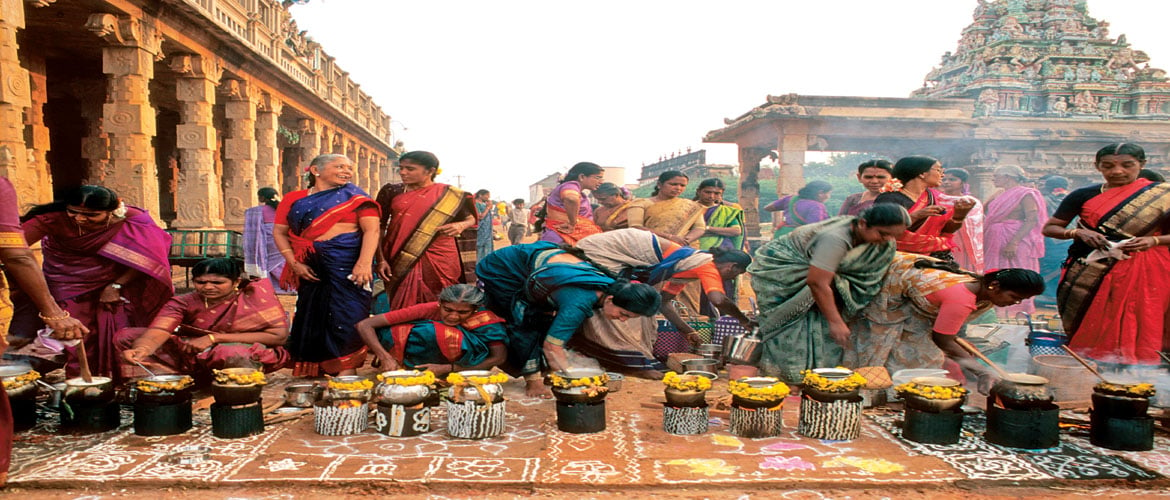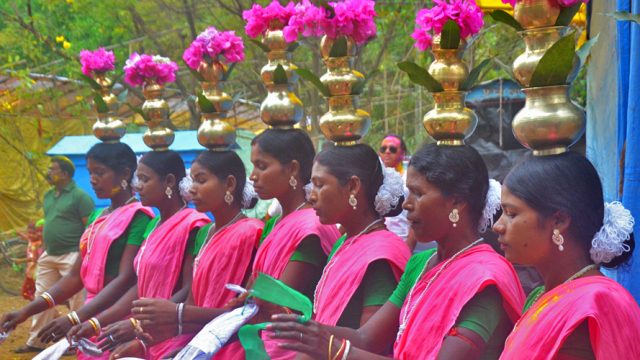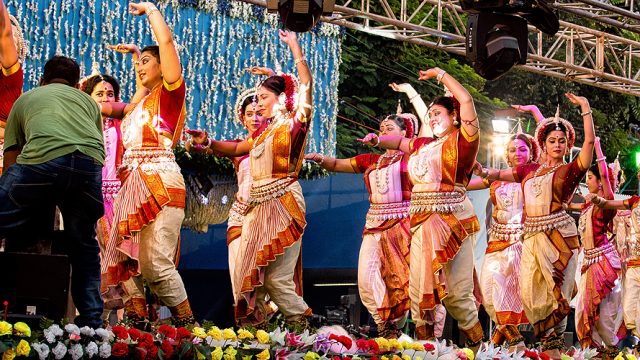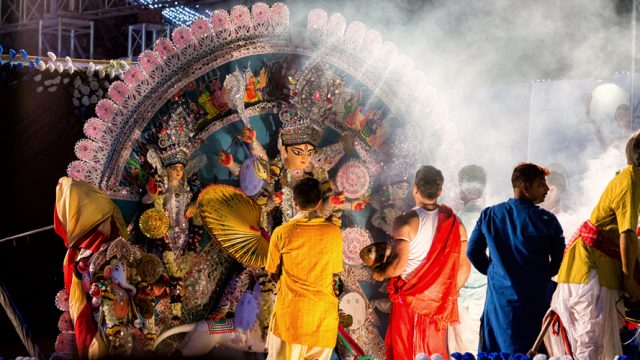India is primarily an agrarian country and thus, it should not come as a surprise that the
People use this festival as an occasion to bury past hostilities and renew relationships. Hence, Makara Sankranti is more a private, family gathering than a large-scale community affair. However, the customs that this festival encompasses are vibrant enough to foster a joyous spirit everywhere and the celebrations routinely spill on to the streets.
Blue skies dotted with colourful kites, houses decorated with rangolis and shops selling heaps of sweetmeats is a common sight in most places in the country that celebrate Makara Sankranti. In several states, folk dancers and local tribes, accompanied by their domesticated cows, visit different neighbourhoods and perform songs and dances to garner donations. Although the festival is celebrated in most agriculture-dependent states in India such as Andhra Pradesh, Telangana, Maha-rashtra, Uttarakhand, Karnataka, Odisha, Gujarat, Bihar and Jharkhand, it holds more significance in some places than others.
Andhra Pradesh and Telangana
Makara Sankranti or simply Sankranti, as people here call it, is undoubtedly the most important festival in Andhra Pradesh. In Telangana too, it is celebrated with boundless enthusiasm.
On Bhogi, which falls on the day before Makara Sankranti, people wake up at dawn to light a bonfire, in which they discard old furniture (and other such items that are no longer used) to signify new beginnings. Children and infants are showered with regi pallu (jujube) to protect them from the evil eye. Families get together to celebrate and generous amounts of sweet preparations such as arisalu (made of rice flour and sesame seeds) are exchanged.
On the day of Makara Sankranti, women and young girls make elaborate rangolis and sprinkle them with cow dung to keep evil spirits away. Families gather on their terraces and fly kites. The activity eventually takes on a competitive air as neighbours try to cut and bring down each others’ kites.

On the two days that follow, Kanuma and Mukkanuma, people feed animals, particularly cows, to encourage the spirit of sharing and charity. Mukkanuma is especially significant for farmers, who offer honorary gifts to their cattle and pray to the elements, such as soil and water, for a good harvest.

Bihar and Jharkhand
The festival is celebrated over a period of two days in this region of the country. People generally start the first day of the festival – Makara Sankranti or Sakraat – by taking a holy dip in rivers or ponds to cleanse themselves of past sins and welcome new beginnings; this is usually followed by savouring delicacies made of rice flour, jaggery and sesame seeds.
On the second day, Makraat, people relish a special khichdi (a preparation of rice, lentils, peas cauliflower and potatoes) served with traditional accompaniments known as chaar yaar (meaning four friends) – roasted vegetables, papad, ghee and pickle. People also organise kite-flying events in some parts of the states.
Karnataka
Sankranti takes the name of Suggi here. Young girls arrange various desserts on a platter and offer it to close relatives as part of a ritual known as Ellu Birodhu. Each plate generally contains preparations made of sesame seeds, jaggery, sugar candy and pieces of sugarcane. Sugarcane is especially popular during this festival as it grows in abundance in the region in the winter months.
To decorate their courtyards, women make large, beautifully-designed rangolis. Kite flying is also a common activity. In rural parts of the state, cows decorated with ornaments and colourful fabric are taken out in grand processions.
Kerala
The most significant event in Kerala during this festival is the appearance of the makara jyothi (light of Capricorn) in the hills of Sabarimala. People believe that Lord Ayyappa, the presiding deity of the temple here, appears in the form of a light source—visible in faraway, inaccessible hills—to bless his devotees. Lakhs of people from all over south India observe a fast for a 40-day period preceding this day and make a pilgrimage to the temple to catch sight of the holy light.
Maharashtra
Maharashtra celebrates Makara Sankranti for three days. The first day is known as Bhogi (lighting of bonfires), the second Makara Sankranti and the third Kinkranti.
Legend has it that a demon named Sankarasura was killed by Goddess Sankranti on this auspicious day. The people of the state prepare various confectioneries from jaggery, sesame seeds and other such items and share them with friends and relatives. The most famous delicacies savoured during this festival are tilgul laddoo (made of sesame seeds and jaggery), different types of halwa and puran poli (flatbread stuffed with jaggery).
Tamil Nadu
As in neighbouring Andhra Pradesh, Sankranti is the most important festival in Tamil Nadu. Except, it is called Pongal here. The festival, which marks the beginning of the Thai month in the Tamil calendar, is celebrated over a period of four days in a manner more or less similar to Andhra Pradesh. The first day of the festival is called Bhogi Pandigai (lighting of bonfires). On the second day, Thai Pongal, rice, jaggery and fresh milk are boiled in new vessels and garnished with brown sugar, cashews and raisins. The preparation, made early in the morning, is called pongal, which is how the festival gets its name. At sunrise, people offer the pongal as prasad to the sun god and pray for prosperity. The dish is relished throughout the day.
Mostly, farmers observe the third day of the festival, Maattu Pongal, during which they worship their cattle. The fourth day, Kaanum, is when people visit their friends, family and neighbours and thank them for help rendered during the harvest season.
January Festivals
Lasya Nadimpally
Makara Sankranti





